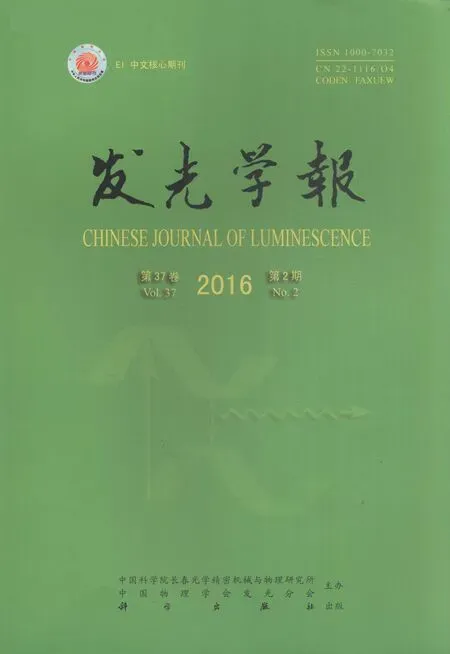Luminescence of Blue-purple Emitting Sr2SiO4:Ce3+,Li+Phosphor
2016-10-28YOUJingXIALinaLIXiangqiXIEXiuzhen
YOU Jing,XIA Li-na,LI Xiang-qi,2*,XIE Xiu-zhen
(1.College of Mɑteriɑls Science ɑnd Engineering,Fuzhou Uniυersity,Fuzhou 350108,Chinɑ; 2.Key Lɑborɑtory of Eco-mɑteriɑls Adυɑnced Technology,Fuzhou Uniυersity,Fuzhou 350108,Chinɑ)*Corresponding Author,E-mɑil:lxiɑngqi@fzu.edu.cn
Luminescence of Blue-purple Emitting Sr2SiO4:Ce3+,Li+Phosphor
YOU Jing1,XIA Li-na1,LI Xiang-qi1,2*,XIE Xiu-zhen1
(1.College of Mɑteriɑls Science ɑnd Engineering,Fuzhou Uniυersity,Fuzhou 350108,Chinɑ; 2.Key Lɑborɑtory of Eco-mɑteriɑls Adυɑnced Technology,Fuzhou Uniυersity,Fuzhou 350108,Chinɑ)*Corresponding Author,E-mɑil:lxiɑngqi@fzu.edu.cn
Blue-PurPle emitting Sr2-xSiO4:xCe3+(x=0.01-0.09,in steps of 0.01)and Sr1.95-ySiO4:0.05Ce3+,yLi+(y=0.01-0.07,in stePs of 0.02)phosphors have been PrePared by co-PreciPitation method with MCM-41 as silica source.The emission spectra of Sr2-xSiO4:xCe3+show an asYmmetric broad band with a maximum around 410 nm and the critical mole fraction is found to be 5%.Ce3+ions Prefer nine-coordinated Sr(Ⅱ)sites over ten-coordinated Sr(Ⅰ)sites.The emission intensitY of Sr1.95SiO4:0.05Ce3+can be imProved effectivelY by co-doPing Li+ions as charge comPensator and a greater degree of the imProvement is observed for PhosPhor calcined at 1 100℃comPared with 1 000℃.The most suitable doPing amount of Li+for Sr1.95-ySiO4:0.05Ce3+,yLi+is y=0.05.
PhosPhor;Sr2SiO4:Ce3+,Li+;luminescence
1 Introduction
As a new tYPe of solid light source,white light emitting diodes(WLEDs)have attracted much attention due to high Power efficiencY,energY saving and environment-friendliness etc.ComPared with the WLEDs based on Yellow YAG phosphors combined with a blue InGaN LED chiP,the NUV-excitedblends of blue-,green-,and red-emitting phosphors have the higher color reProduction and color rendering[1-4].As a good candidate excited in the NUV range,Sr2SiO4matrix PhosPhor is extensivelY studied because of its good chemical stabilitY and thermal stabilitY[5-10].
The commonly doPed rare-earth luminescentcenters in Sr2SiO4matrix include Eu2+,Eu3+,Ce3+,DY3+,etc.Sr2SiO4:Eu2+is one of the Prevailinggreen-YellowphosphorsforWLEDs[8]. Sr1.97-(x+y)DY0.03CexLiySiO4can emit colour from blue-white to orange-white by varYing DY3+concentration[9].The non-equivalent substitution of divalent ion by trivalent ion would create vacancies,which quench the luminescence.Reports show that co-doping of charge compensator(Li+,Na+,K+)can solve this Problem and enhance the emission intensities of phosphors,such as Sr2SiO4:Tb3+[10],Sr3B2O6:Ce3+,Eu2+[11],(Ba1-xSrx)9Sc2Si6O24:Ce3+[12],and Sr2SiO4:Sm3+[13].In addition to charge comPensator,the luminescence of rare-earth ions doPed Sr2SiO4is also influenced by the local coordination of the rare-earth ions in the host lattice. Sr2SiO4exists in two crYstalline Phases:β-Sr2SiO4(monoclinic)and α′-Sr2SiO4(orthorhombic).β-Sr2SiO4Phase is the low temperature Phase while α′-Sr2SiO4Phase the high temperature one[14].There are two kinds of cation sites for Sr2+in both α′and β Phases.Sr(Ⅰ)is ten-coordinated and Sr(Ⅱ)is nine-coordinated by oxYgen atoms[15].The amount of Sr(Ⅰ)site is equal to that of Sr(Ⅱ)site.For Sr(Ⅰ)site the average Sr—O bond distance is 0.285 2 nm in α′Phase and 0.285 0 nm in β Phase.For Sr(Ⅱ)site the average Sr—O bond distance is 0.269 8 nm in α′Phase and 0.270 9 nm in β Phase[16].Since the ionic radius of the Ce3+(0.125 nm,10 coord.)is verY similar to ionic radius of the Sr2+(0.132 nm,10 coord.),Ce3+ions substitute Sr2+ions in Sr2SiO4lattice[17].
The commercial Sr2SiO4phosphors are commonly Produced by the conventional solid-state reaction methodinvolvingcalciningattemperatures above 1 200℃[6-8].RePorts show that the sYnthesized temperature of the silicate phosphors can be loweredbyusingmesoPoroussilicaasSi source[18-19].In this PaPer,we sYnthesized Sr2SiO4:Ce3+,Li+phosphors at 1 000 or 1 100℃,using MCM-41 as silicon source.The relationshiPs between emission ProPertY and Ce3+concentration as well as Li+concentration are discussed.The influence of temperature on emission intensitY is also studied.
2 ExPeriments
2.1Preparation
MCM-41 was sYnthesized as follows:tetraethYl orthosilicate(TEOS)was added under constant stirring to a mixing solution of cetYltrimethYlammonium bromide(CTAB),ammonia solution and distilled water.After stirred for 1 h at room temperature,the solution was sealed in a Teflon-lined stainless steel autoclave and heated at 110℃for 48 h.The solid PreciPitate was filtered,washed,dried and calcined in air at 550℃for 6 h.The molar ratio of the reactants was n(CTAB):n(TEOS):n(NH3•H2O):n(H2O)=0.24:0.075:0.01:66.7.
The Sr2-xSiO4:xCe3+(x=0.01-0.09,in stePs of 0.01)and Sr1.95-ySiO4:0.05Ce3+,yLi+(y=0.01-0.07,in stePs of 0.02)phosphors were PrePared as follows:Sr(NO3)2,LiNO3,and Ce(NO3)3(0.1 mol/L)solution were mixed in deionized water to get a homogenized solution A.Amount of MCM-41 and oxalic acid(n(MCM-41):n(oxalic acid)=1:1.5,molar ratio),ammonia solution was uniformlY mixed in deionized water as solution B,sonicating for about 25 min.Then solution A was added droPwise to the solution B under vigorous stirring.After stirred for 1 h and then stilled at room temperature for 2 h,the Products were filtered,washed,dried,and calcined at 1 000 or 1 100℃for 3 h in the carbon reduction atmosPhere.
2.2Characterizations
X-raY Powder diffraction(XRD)measurements were Performed on the Rigaku D/MAX-Ultima S equiPPed with Cu Ka radiation(40 kV,20 mA),at the rate of 2.0(°)/min over the range of 1°-8°(2θ),and 6.0(°)/min over the range of 20°-70°(2θ).The Particle morPhologY and size were measured using a thermal field emission electron microscoPe(SUPRA 55,Carl Zeiss,GermanY)at an accelerating voltage of 3.00 kV.The excitation and emission spectra were measured on a FluoroMax-4 fluorescent sPectroPhotometer with a slit width of 0.8 nm and a Xe lamP as light source.The quantum efficiencY was measured by a FluoroMax-4 fluorescent sPectroPhotometer.All the samPles were measured at room temperature.
3 Results and Discussion
XRD Pattern of MCM-41 Powder is shown in Fig.1.It can be observed that there are three wellresolved Peaks at 2θ range of 1°-5°,indexed as(100),(110)and(200)reflections of the hexagonal Phase MCM-41[20].This indicates that the sYnthesized samPlePossesses tYPical mesoPorous structure of MCM-41.
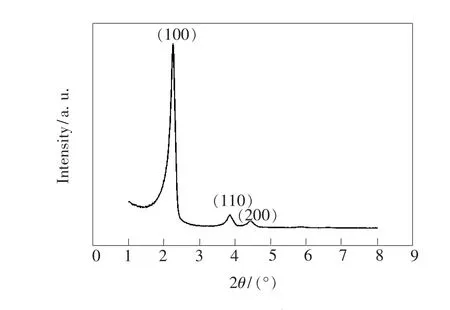
Fig.1 XRD Pattern of MCM-41

Fig.2 XRD Patterns of Sr2-xSiO4:xCe3+samPles calcined at 1 100℃
XRD Patterns of Sr2-xSiO4:xCe3+samPles calcined at 1 100℃are shown in Fig.2.For x=0.01 samPle,major β-Sr2SiO4Phase co-exists with minor α′-Sr2SiO4Phase.When x increased to 0.03,the intensitY of diffraction Peaks of β-Sr2SiO4decreased. When x is higher than 0.03,the β-Sr2SiO4Phase comPletelY transformsintothePureα′-Sr2SiO4Phase,and a weak Peak at 2θ=28.6°,assigned to the(111)diffraction of the CeO2Phase,can be clearlY observed.
XRD Patterns of Sr1.95SiO4:0.05Ce3+and Sr1.9-SiO4:0.05Ce3+,0.05Li+samPles calcined at different temperatures are Presented in Fig.3.All the three samPles consist of nearlY Pure α′-Sr2SiO4Phase with onlY minor CeO2imPuritY Phase.ComPared to the Sr1.95SiO4:0.05Ce3+samPle calcined at 1 000℃,the diffraction Peaks of Sr1.95SiO4:0.05Ce3+and Sr1.9SiO4:0.05Ce3+,0.05Li+calcined at 1 100℃shift to the higher angle-side,indicating the lattice shrinking with rising calcining temperature.

Fig.3 XRD Patterns of Sr1.95SiO4:0.05Ce3+and Sr1.9SiO4:0.05Ce3+,0.05Li+samPles calcined at different temperatures
The structure of α′-Sr2SiO4is similar to that of β-K2SiO4and has been described in literature[21-22]. The schematic crYstal structure of α′-Sr2SiO4Phase is shown in Fig.4(a).There are two cation sites of Sr2+in α′-Sr2SiO4Phase.Sr(Ⅰ)is 10-coordinated and Sr(Ⅱ)is 9-coordinated by oxYgen atoms,as shown in Fig.4(b).
SEM images of Sr1.95SiO4:0.05Ce3+samPles calcined at different temperatures are shown in Fig. 5.For samPles calcined at 1 000℃,the Particle diameters are about 2.3 μm and the shaPe is regular. As the calcining temperature increased from 1 000℃to 1 100℃,the Particle sizes increase from 2.3 μm to 4.2 μm,and the shaPe is also regular.ComPared with the samPle calcined at 1 000℃,the samPle at1 100℃shows cleaner Particle surfaces and more straight grain boundaries.It indicates that the sam-Ple calcined at 1 100℃has better crYstallinitY.
Fig.6shows the emission and excitation spectra of the Sr2-xSiO4:xCe3+samPles calcined at 1 100℃.All the excitation spectra show two bands at about 280 nm and 351 nm,corresPonding to the 4f-5d transition of Ce3+.The emission spectra show an asYmmetric broad band with a maximum locating at around 410 nm,ascribed to the 5d-4f transition of Ce3+.The emission Peak shifts towards red with increasing x.The emission intensitY and half-band width increase significantlY with increasing Ce3+concentration,and graduallY decrease as x exceeding 0.05.This shows that 5%Ce3+is a critical concentration in Sr2SiO4.
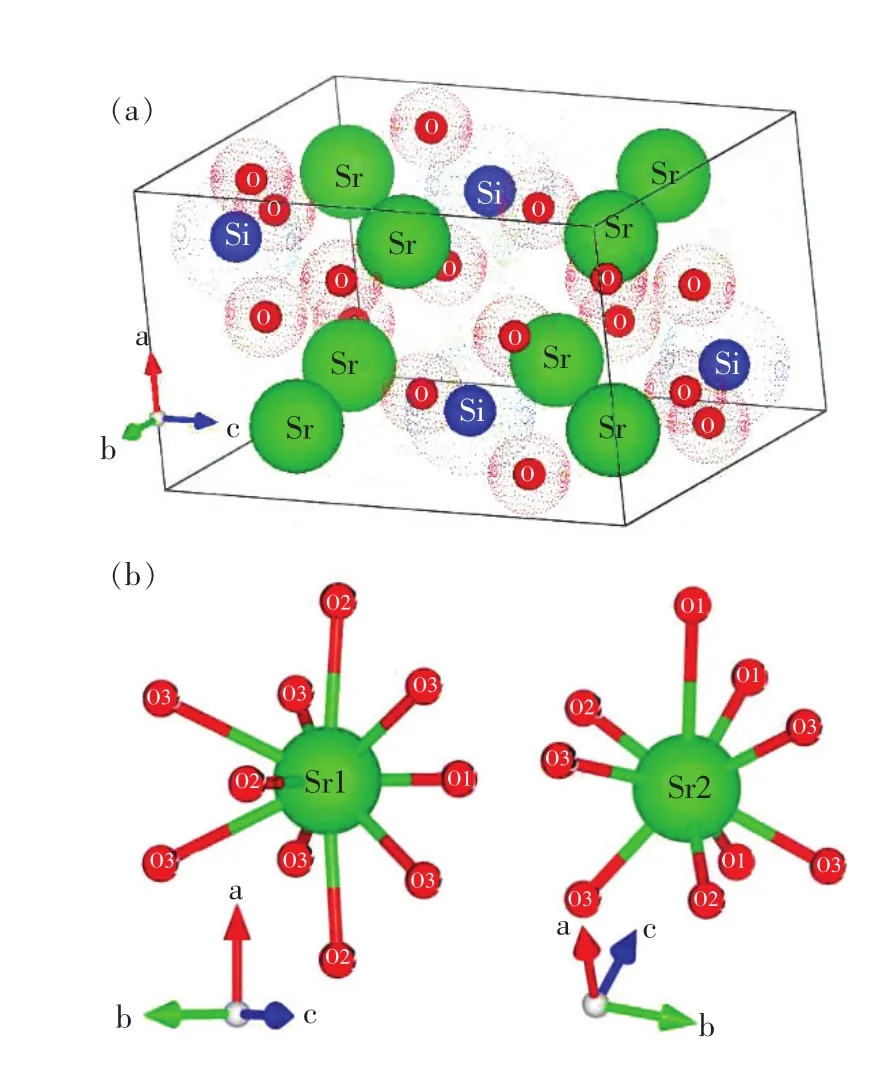
Fig.4 (a)Schematic crYstal structure of α′-Sr2SiO4Phase.(b)Coordination environments of Sr(Ⅰ)and Sr(Ⅱ)sites in α′Phase.
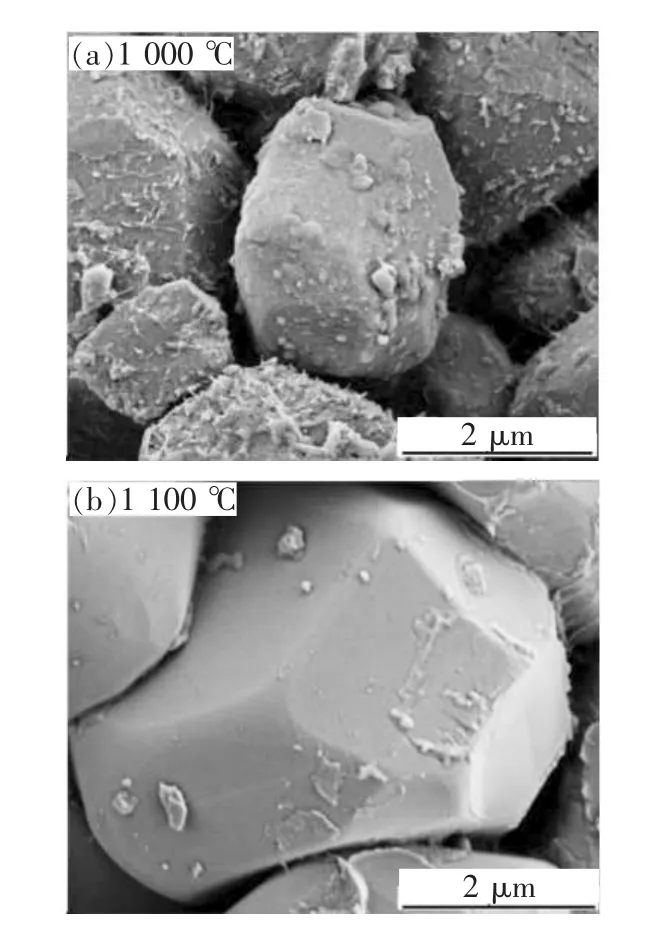
Fig.5 SEM images of Sr1.95SiO4:0.05Ce3+samPles calcined at different temperatures

Fig.6 Emission and excitation spectra of Sr2-xSiO4:xCe3+samPles calcined at 1 100℃
The emission sPectrum of Sr1.95SiO4:0.05Ce3+could be decomPosed into two Gaussian Peaks centered at 398 nm and 424 nm,resPectivelY,as shown in Fig.7.According to Van Uitert's emPirical equation[23]shown below,the emission wavelength of Ce3+in Sr2SiO4host could be calculated to identifY the sites of Ce3+ions.

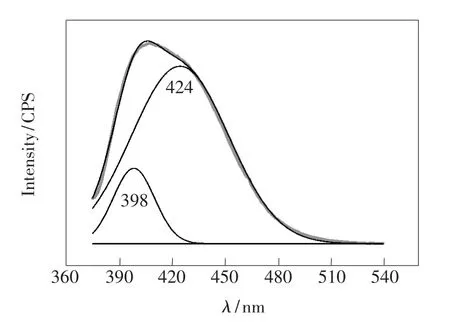
Fig.7 Gaussian Peak fittings for emission sPectrum of Sr1.95-SiO4:0.05Ce3+calcined at 1 100℃
Q is the Position in energY for the lower d-band edge for the free ion(50 000 cm-1for Ce3+).V is the valance of the activator,and is 3 for Ce3+ion.n is the coordination number of the host cation.r is the radius of the host cation rePlaced by Ce3+ion.eɑ is the electron affinitY of the atoms that form anions(1.6 eV for O2-).The ionic radius of 10-and 9-coordinated Sr2+are 0.132 nm and 0.125 nm,resPectivelY[16].The calculated Peaks of Ce3+in ten-coordinated Sr(Ⅰ)and nine-coordinated Sr(Ⅱ)are located at 396 nm and 436 nm,resPectivelY. The observed emission Peaks at 398 nm and 424 nm are in verY good agreement with the calculated Peaks,and can be attributed to the Ce3+(Ⅰ)and Ce3+(Ⅱ),resPectivelY.The result indicates that Ce3+ions occuPY the two different sites of Sr2+in Sr2SiO4host.
The Gaussian fitting results for the spectra of Sr2-xSiO4:xCe3+phosphors are summarized in Tab. 1.As shown in Tab.1,when the content of Ce3+increases in the range of 0.01 to 0.05,the ratio of integral area of Gaussian fitting Peak Ce3+(Ⅰ)to Ce3+(Ⅱ)decreases,indicating a Preference for Ce3+to occuPY the smaller Sr(Ⅱ)site rather than the larger Sr(Ⅰ)site in the solid solution.The radius of Ce3+is smaller than that of Sr2+.The Preferent occuPation of smaller Sr2+(Ⅱ)by Ce3+can reduce lattice distortion.
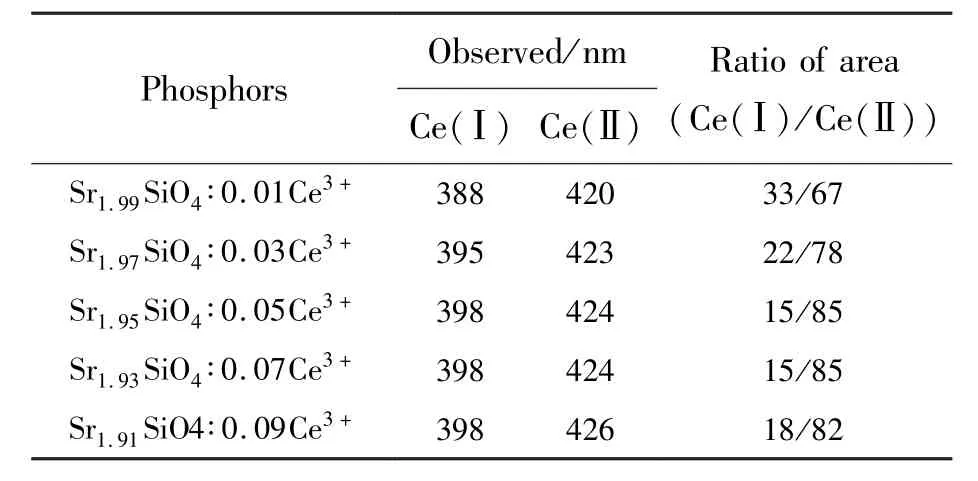
Tab.1 Gaussian fitting results for the spectra of Sr2-x-SiO4:xCe3+phosphors
The emission spectra of Sr1.95SiO4:0.05Ce3+and Sr1.9SiO4:0.05Ce3+,0.05Li+calcined at different temperatures are Presented in Fig.8.As the calcining temperature increased from 1 000℃to 1 100℃,the emission intensities of phosphors enhance obviouslY.This can be attributed to the im-Proved crYstallinitY.It can also be observed from Fig.8that the emission intensitY of Sr1.9SiO4:0.05Ce3+,0.05Li+is much higher than that of Sr1.95SiO4:0.05Ce3+calcined at the same temperature.DoPing Li+ions can obviouslY imProve the emission intensitY.The degree of imProvement is influenced by the calcining temperature.ObviouslY, doPing Li+ions imProve the emission intensitY of Sr1.95SiO4:0.05Ce3+calcined at 1 100℃more effectivelY than that calcined at 1 000℃.
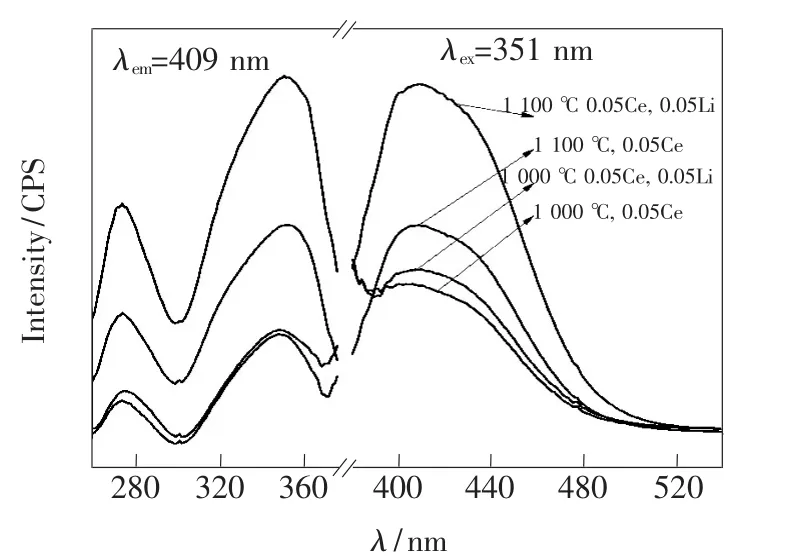
Fig.8 Excitation and emission spectra of Sr1.95SiO4:0.05Ce3+and Sr1.9SiO4:0.05Ce3+,0.05Li+calcined at different temperatures
Fig.9shows the emission spectra of Sr1.95-ySiO4:0.05Ce3+,yLi+under 351 nm excitation.It can be seen that all the samPles show the characteristic emission of Ce3+at 410 nm and no distinct diversifications on the shaPes and Positions of the emission spectra are observed.The emission intensities of Sr1.95-ySiO4:0.05Ce3+,yLi+increase with increasing y,and graduallY decrease as the doPing concentration of Li+exceeds y=0.05.The intensitY of samPle with y=0.05 shows the highest intensitY,two times as high as that of samPle with y=0.The results indicate that the most suitable doPing amount for Li+is equal to that for Ce3+.The non-equivalent substitution of Sr2+by Ce3+can lead to the advent of Sr2+vacancY,which acts as the charge traPPing center and hence quenches the luminescence.When the monovalent alkali metal ion Li+is co-doPed as the charge comPensator,the number of the vacancies decreases with increasing concentration of Li+,and the emission intensitY is therefore imProved[24-26].

Fig.9 Emission spectra of Sr1.95-ySiO4:0.05Ce3+,yLi+
The internal quantum efficiencY(IQE)was measured using the excitation source of 351 nm.The IQE of Sr1.95SiO4:0.05Ce3+and Sr1.9SiO4:0.05Ce3+,0.05Li+calcined at 1 100℃were obtained to be 23.7%and 35.7%,resPectivelY.The result suggests that doPing ProPer amount of Li+ions is an effective method to enhance the IQE of Sr2SiO4:Ce3+PhosPhor.
The measured chromaticitY coordinates(xc,yc)of Sr2-x-ySiO4:xCe3+,yLi+phosphors are summarized in Tab.2.The CIE chromaticitY diagram of Sr1.95-yLiySiO4:0.05Ce3+phosphors is shown in Fig.10.It can be seen that all the samPles exhibit blue-PurPle emissions.The variation of Li+doPing concentration onlY influences the emission intensitY and has little effect on the colorimetric coordinate location in the CIE chromaticitY diagram.

Tab.2 Chromaticity coordinates(xc,yc)of Sr2-x-ySiO4:xCe3+,yLi+phosphors
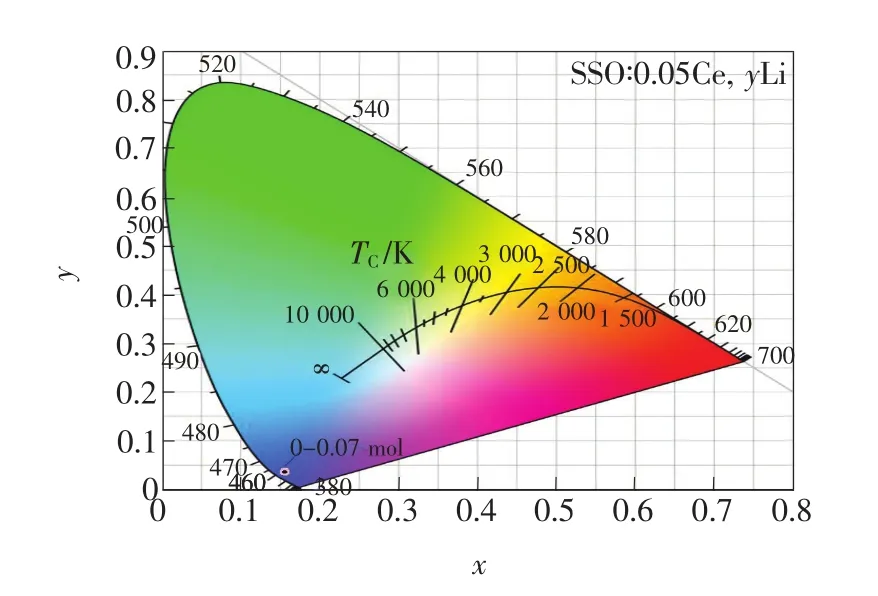
Fig.10 CIE chromaticitY coordinates of Sr1.95-yLiySiO4:0.05Ce3+PhosPhors
4 Conclusion
Sr2-xSiO4:xCe3+and Sr1.95-ySiO4:0.05Ce3+,yLi+phosphors have been PrePared at 1 000 or 1 100℃.For Sr2-xSiO4:xCe3+samPles,major β-Sr2SiO4Phase co-exists with minor α′-Sr2SiO4Phase when x=0.01,and the α′-Sr2SiO4Phase comPletelY transforms into β-Sr2SiO4Phase when x>0.03.All the samPles exhibit blue-PurPle emissions.The critical mole fraction of Ce3+is found to be 5%.DoPing ProPer amount of Li+ions can imProve the emission intensitY of Sr1.95SiO4:0.05Ce3+calcined at 1 100℃more effectivelY than that at 1 000℃.The most suitable doPing amount of Li+for Sr1.95-ySiO4:0.05Ce3+,yLi+is y=0.05.The results in Present work could be helPful for efficiently enhancing the luminescence of Sr2SiO4:Ce3+PhosPhor.
[1]LI Y Y,SHI Y R,ZHU G,et ɑl..A single-comPonent white-emitting CaSr2Al2O6:Ce3+,Li+,Mn2+PhosPhor υiɑ energY transfer[J].Inorg.Chem.,2014,53(14):7668-7675.
[2]HUANG C H,CHIU Y C,LIU W R.Ca3Si2O4N2:Ce3+,Li+PhosPhor for the generation of white-light-emitting diodes with excellent color rendering index values[J].Eur.J.Inorg.Chem.,2014,2014(23):3674-3680.
[3]雷炳富,沙磊,刘应亮,等.纳米Sr2SiO4:Eu3+荧光粉的燃烧法合成及光谱性质[J].发光学报,2011,32(6):535-541.
LEI B F,SHA L,LIU Y L,et ɑl..SYnthesis of nano-sized Sr2SiO4:Eu3+PhosPhor by combustion method and its luminescence ProPerties[J].Chin.J.Lumin.,2011,32(6):535-541.(in Chinese)
[4]CHEN J,LIU Y G,LIU H K,et ɑl..The luminescence ProPerties of novel α-Mg2Al4Si5O18:Eu2+PhosPhor PrePared in air[J].RSC Adυ.,2014,4(35):18234-18239.
[5]GUPTA S K,KUMAR M,NATARAJAN V,et ɑl..OPtical ProPerties of sol-gel derived Sr2SiO4:DY3+-Photo and thermallY stimulated luminescence[J].Opt.Mɑter.,2013,35(12):2320-2328.
[6]ZHANG X G,TANG X P,ZHANG J L,et ɑl..An efficient and stable green PhosPhor SrBaSiO4:Eu2+for light-emitting diodes[J].J.Lumin.,2010,130(12):2288-2292.
[7]LEE S H,YOUNG H,KANG Y C,et ɑl..Characteristics of α′-and β-Sr2SiO4:Eu2+PhosPhor Powders PrePared by sPraY PYrolYsis[J].Cerɑm.Int.,2010,36(4):1233-1238.
[8]JU L C,CAI C,ZHU Q Q,et ɑl..Color tunable Sr2SiO4:Eu2+phosphors through the modification of crYstal structure [J].J.Mɑter.Sci.:Mɑter.Electron.,2013,24(11):4516-4521.
[9]SARADHI M P,LAKSHMINARASIMHAN N,BOUDIN S,et ɑl..Enhanced luminescence of Sr2SiO4:DY3+by sensitization(Ce3+/Eu2+)and fabrication of white light-emitting-diodes[J].Mɑter.Lett.,2014,117:302-304.
[10]GHILDIYAL R,HSU C H,LU C H.Aliovalent ion substitution and enhanced Photoluminescence of Sr2SiO4:Tb3+/Z+(Z=Li,Na,and K)phosphors[J].Int.J.Appl.Cerɑm.Technol.,2011,8(4):759-765.
[11]SEKAR S,ARUNKUMAR P,JEYAKUMAR D,et ɑl..White light emission in alkali metal ion co-doPed single host lattice PhosPhor Sr3B2O6:Ce3+,Eu2+,A+[A=Li,Na and K][J].Cerɑm.Int.,2015,41(3):3497-3501.
[12]BRGOCH J,BORG C K H,DENAULT K A,et ɑl..Tuning luminescent ProPerties through solid-solution in(Ba1-xSrx)9-Sc2Si6O24:Ce3+,Li+[J].Solid Stɑte Sci.,2013,18:149-154.
[13]HA M G,HAN K R,KIM J S,et ɑl..Effects of incorPorated alkali metal ions on the chemical bonding states and oPtical ProPerties in Sr2SiO4:Sm3+phosphors[J].J.Koreɑn Phy.Soc.,2014,64(4):579-583.
[14]HAN J K,HANNAH M E,PIQUETTE A,et ɑl..Structure dePendent luminescence characterization of green-Yellow emitting Sr2SiO4:Eu2+phosphors for near UV LEDs[J].J.Lumin.,2012,132(1):106-109.
[15]LEE J H,KIM Y J.Photoluminescent ProPerties of Sr2SiO4:Eu2+phosphors PrePared by solid-state reaction method[J]. Mɑter.Sci.Eng.B,2008,146(1-3):99-102.
[16]BARZOWSKA J,SZCZODROWSKI K,KRO S′NICKI M,et ɑl..Influence of high Pressure on Sr2SiO4:Eu2+luminescence[J].Opt.Mɑter.,2012,34(12):2095-2100.
[17]LAKSHMINARASIMHAN N,VARADARAJU U V.White-light generation in Sr2SiO4:Eu2+,Ce3+under near-UV excitation a novel PhosPhor for solid-state lighting[J].J.Electrochem.Soc.,2005,152(9):H152-H156.
[18]XIONG L M,SHI J L,GU J L,et ɑl..A mesoPorous temPlate route to the low-temperature PreParation of efficient green light emitting Zn2SiO4:Mn phosphors[J].J.Phys.Chem.B,2005,109(2):731-735.
[19]LU Q S,LI J G.Low-temperature sYnthesis of Y2SiO5:Eu3+Powders using mesoPorous silica and their luminescence ProP-erties[J].Opt.Mɑter.,2011,33(3):381-384.
[20]BECK J S,VARTULI J C,ROTH W J,et ɑl..A new familY of mesoPorous molecular sieves PrePared with liquid crYstal temPlates[J].J.Am.Chem.Soc.,1992,114(27):10834-10843.
[21]GUPTA S K,MOHAPATRA M,KAITY S,et ɑl..Structure and site selective luminescence of sol-gel derived Eu:Sr2SiO4[J].J.Lumin.,2012,132(6):1329-1338.
[22]CATTI M,GAZZONI G,IVALDI G.Structures of twinned β-Sr2SiO4and of α′-Sr1.9Ba0.1SiO4[J].Actɑ Cryst.,1983,39(1):29-34.
[23]VAN UITERT L G.An emPirical relation fitting the Position in energY of the lower d-band edge for Eu2+or Ce3+in various comPounds[J].J.Lumin.,1984,29(1):1-9.
[24]TIAN L H,MHO S I.Enhanced luminescence of SrTiO3:Pr3+by incorPoration of Li+ion[J].Solid Stɑte Commun.,2003,125(11-12):647-651.
[25]WU H Y,HU Y H,ZHANG W,et ɑl..Flux's influence on the luminescent ProPerties of euroPium and dYsProsium codoPed melilite long afterglow PhosPhor[J].J.Non-Cryst.Solids,2012,358(20):2734-2740.
[26]GAWANDE A B,SONEKAR R P,OMANWAR S K.SYnthesis and enhancement of luminescence intensitY by co-doPing of M+(M=Li,Na,K)in Ce3+doPed strontium haloborate[J].Opt.Mɑter.,2014,36(7):1143-1145.
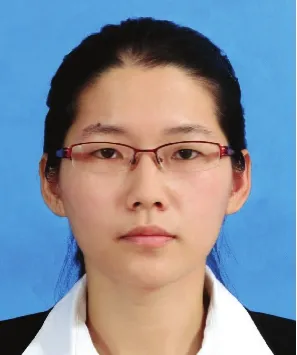
游静(1990-),女,福建漳州人,硕士研究生,2013年于昆明理工大学获得学士学位,主要从事稀土掺杂硅酸盐基质发光材料方面的研究。
E-mail:Youjing186@126.com
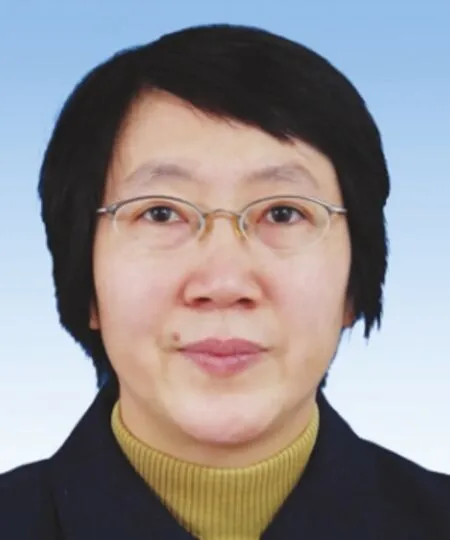
李湘祁(1968-),女,湖南宜章人,副教授,1990年于中南工业大学(现中南大学)获得博士学位,主要从事介孔材料、硅酸盐基质发光材料的合成应用方面的研究。
E-mail:lxiangqi@fzu.edu.cn
1000-7032(2016)02-0131-07
Sr2SiO4:Ce3+,Li+蓝紫色荧光粉发光性能的研究
游 静1,夏丽娜1,李湘祁1,2*,谢秀珍1
(1.福州大学材料科学与工程学院,福建福州 350108; 2.福州大学生态环境材料先进技术重点实验室,福建福州 350108)
以MCM-41为硅源,采用共沉淀法制备Sr2-xSiO4:xCe3+(x=0.01~0.09,步长为0.01)和Sr1.95-ySiO4:0.05Ce3+,yLi+(y=0.01~0.07,步长为0.02)蓝紫色荧光粉。Sr2-xSiO4:xCe3+的发射光谱是一个不对称的宽带,最大峰值在410 nm左右。Ce3+的最佳掺杂量为5%。Ce3+离子倾向于占据九配位的Sr(Ⅱ)格位。共掺电荷补偿剂Li+可以有效地提高Sr1.95SiO4:0.05Ce3+的发光强度,其中Li+离子对1 100℃煅烧样品的发光强度的提高程度比1 000℃的更高,Li+的最佳掺杂量为y=0.05。
荧光粉;Sr2SiO4:Ce3+,Li+;发光
2015-11-20;
2015-12-08
O482.31 Document code:A DOI:10.3788/fgxb20163702.0131
